Photographer Mario Lalich shot movie makers, flashy rock stars, and scantily clad models, becoming famous for his stylized images of absurdity — a helmeted astronaut popping out of a manhole on a busy Manhattan street, perhaps, or a husky man at a dinner table spouting water at a fish.
In the last three years of his life, however, Mario became utterly captivated by an unlikely, overlooked, and surprisingly riveting source of beauty: mold.
Taking walks with his dog through the coastal village of Tucepi, Croatia, during the Covid-19 lockdown, Mario became mesmerized by crumbling edifices, rotting walls, and dilapidated shacks — drawn to the smudges, smatterings, and tiny spots of decay that dotted them, shooting the splotches with a small, simple camera.
And it was when he enlarged the tiny fungal colonies that Mario unlocked unknown and surreal universes: some looked like heavenly constellations, others appeared ghostly or contained figures that looked like mermaids, gods, flowers, or neolithic sculptures, each one, upon close study, becoming a hallucinogenic Rorschach explosion of possibilities.
Printed on metal, the fungi photos resulted in Mario’s most acclaimed show: “The Secret Life of Abandoned Walls” which opened in May 2021 at Croatia’s National Museum of Modern Art in Zagreb.
The works, as he noted in the museum exhibition’s accompanying Artist’s Statement, were the complete opposite of what he’d done for the majority of his 30-year-long career during which he took “photographs of people, always trying to find something abstract in them. For this project, I was photographing abstractions, looking for a human element in them.”
The pictures also illustrated Mario’s never-ending obsession with giving the kaleidoscope yet another turn, widening his focus, and expanding his creativity to new subjects and novel forms. He simply never got bored.
His family is now selling the original works from “The Secret Life of Abandoned Walls” exhibition so that his friends from across the globe can keep the memory of Mario Lalich alive. (For more details on the sale, click here.)
They are also posting the following synopsis of his life, starting with Mario’s appearance in the Pacific Northwest.
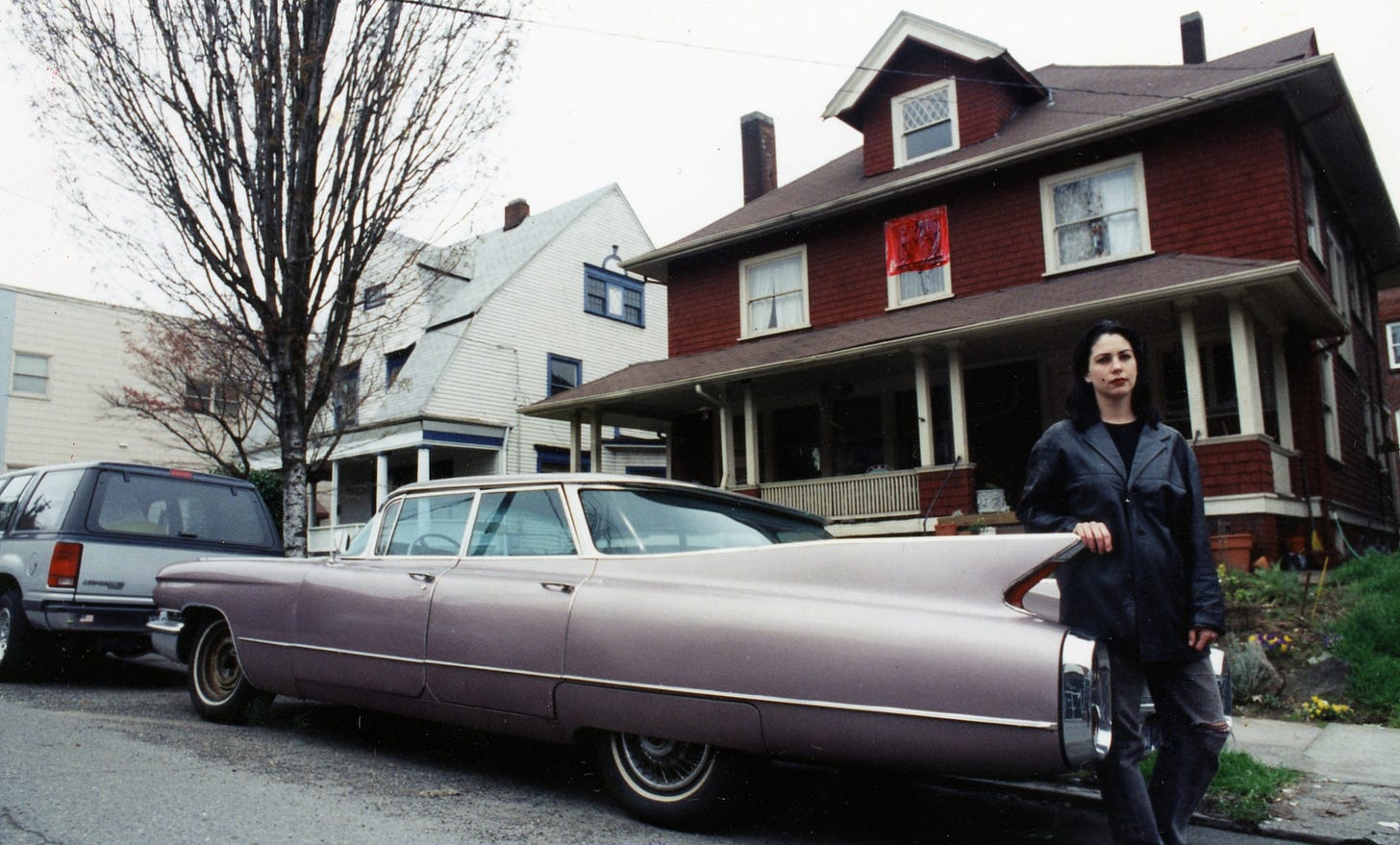
A Crazy Croatian with a Camera
Arriving in Portland, Oregon in 1991, tall, loud, and handsome Mario, hailing from Split, Croatia, might as well have landed from a different planet. Even in a city so awash with characters that it felt like somebody was shaking out a novel from the skies, Mario stood out — a striking figure on either side of the bar. He was so foreign, so larger-than-life, so vibrant, and so ionizing that any sense of tranquility immediately shattered when he entered a room, all eyes landing upon him.
Whether it was his frequently cocked eyebrow, the long overcoats he often wore, or the cars he drove, hazardously — the black Lincoln Continental, the lilac Cadillac with fins, the yellow “Prohibition van” with a hole in the floorboard — Mario exuded intensity, style, and a touch of madness.
Trouble trailed him like the smoke from his constant cigarettes and the two were often linked: while living in his apartment on NW Glisan Street — where he’d painted geometric shapes across the kitchen in screaming colors and spray-painted the bathroom gold — Mario quickly became infamous with the Portland Fire Department after setting two beds and one couch ablaze, the result of three different instances of dozing off with a lit cigarette.
The scorched, putrid-smelling couch, which Mario couldn’t get rid of because wherever he dumped it, someone hauled it back to his place, became the inspiration for his 20-minute black-and-white film noir movie The Davenport, released in 1999.
But long before he made the movie — with appearances by Portland VIPs, including Pink Martini’s Thomas Lauderdale and Courtney Taylor-Taylor of the Dandy Warhols — before Mario even became widely known as a fashion photographer or began selling to outlets like the New York Times Magazine, Cartier, and Rolling Stone, Mario became notorious as a barkeep.
First taking a job at Key Largo, where young Courtney Taylor was a bouncer, Mario got so messed up his last night there — being furious that they’d forced him to work when he’d planned a party — that he went MIA mid-shift and they found him passed out behind the bar.
He was nevertheless promptly hired to ‘tend at the revamped Lotus Cardroom and Café, a seedy den of inequity and Portland’s first gambling establishment when it opened in 1924, running a sleazy brothel upstairs, according to local lore. Despite the glitzy revamp 70 years later, decadence was by then soaked into its 30-foot-long mirrored cherry wood bar, which bore a small hole from a bullet — supposedly made after it had blasted through the bartender.
The Lotus: Two Crazy Croatians with Cocktails
Given its dodgy history, the Lotus was a perfect fit for Mario and his fellow barman, artist Karl Abramovic, whose ancestors hailed from the same land as Mario’s and with whom Mario became fast friends. “The Crazy Croatians,” as they were called by some, attracted fun-loving, raucous, and young customers — although the good-looking duo was less adored by the old-timer alcoholics and pensioners that continued to trudge to the Lotus as they had for decades.
The two bartenders were like long-lost aliens reunited, sharing a fondness for absurdist films, casinos, and camping in the desert as well as a propensity for hard partying: life typically blasted into a new, irrational orbit whenever they showed up anywhere together. “The energy between them was insane,” recalls one who knew them. “It was always who could drink more? Who could gamble more? Who could be crazier?”
Together Mario and Karl also launched creative ventures, including designing a three-story downtown dance club called Moody’s, which prompted both to sober up and pay more attention to their art.
At the Lotus, Mario’s brusque manner caught the attention of Tina Randolph, then working across the street in the cosmetics department at Saks Fifth Avenue. “I was going there a few times a week, and Mario always waited on us — and he was always extremely rude,” said Tina. “I never tipped him, which only made him ruder.”
Despite their initial strong dislike for one another, Tina and Mario started chatting one night at the Lotus when Mario was off work; both happened to be on disastrous blind dates. So they ditched their dates and went to Mario’s place, where Tina promptly moved in.
It marked a turning point for both. Mario never again set another piece of furniture aflame — and at Tina’s urging he focused on commercial photography, soon achieving successes he’d only dreamt of. And Tina embarked on a 30-year international whirlwind. “You could never meet Mario just for a coffee or a drink,” said Tina, who married him in 1994. “When you were with Mario, whatever you were doing, it became an adventure.”
Despite Mario’s love for his street-parked classic sedans, which were mostly just magnets for parking tickets since they invariably stopped running a few days after he bought them — the brakes on the Cadillac famously went out on Tina, who was forced to “crash-park” it into another car — for the rest of their time in Portland, they zipped around in Tina’s car, a maroon Ford Escort that they called “Little Ugly” and which always seemed a few sizes too small to contain Mario.
The Best-Smelling Office in Portland
Shortly after they hooked up, Italian cafe Torrefazione opened on NW 23rd making the smoothest, most aromatic coffee in Portland, served in painted Italian mugs. Mario promptly turned it into his office — he and Tina spent hours every day there — with Mario wheeling and dealing from its sidewalk terrace, lining up photo shoots and finding models among the customers and those passing by.
Around then, they moved into a huge downtown PDX loft, just under that of Thomas Lauderdale, who was working on a second Pink Martini album — featuring songs in different languages. Mario co-wrote a cut with Thomas in Croatian, the haunting result being “U plavu zoru,” a song about a woman on a night train, missing her lover. Back then, in the 1990s, the song proved popular in concert and decades later, in 2022, it was picked as the opening cut for the Netflix movie The Weekend Away.
The experience of co-writing the Pink Martini song changed him, said Tina, and he immersed himself in music. “He started hanging out with musicians and we threw great DJ parties when hundreds of people, most of whom we didn’t know, showed up at our loft.” Mario began making “Mario Mix” dance CDs, handing them out to everyone. And he simultaneously got more serious about his art, placing photos in magazines and selling them to agencies.
Entering a striking but macabre photo in a competition with the prestigious design journal Communication Arts, Mario won in the “Best Self-Promotion” category, and along with Tina wrote the screenplay for The Davenport, which he filmed with his friend George Calvo. It opened at Cinema 21 and played at New York and European film festivals, establishing Mario as a unique creator of surreal film.
Meanwhile, Mario’s photography was taking off. So the couple sold Little Ugly to Karl Abramovic and moved to New York. Little Ugly broke down a few days later.
Working with Getty Images and landing an agent to help him navigate the advertising industry, Mario rented a Bowery Street loft, the site of more dance parties. After one particularly wild Halloween blowout, Tina discovered she was pregnant — becoming a first-time mother at age 35.
They knew it was a girl, but were unsure of her name. However, every night — at 3 am — for the entire week before the baby was born, their phone rang. On the line: a woman of Asian descent, repeating only one word over and over: “Lola! Lola! Lola!” They took it as a sign.
Not long after Lola was born, two planes smashed into the Twin Towers. Mario grabbed his camera — and with Tina and Lola headed towards Ground Zero. “Everyone was running away, and we were running towards it,” recalled Tina. Days later, Mario was back, exploring the rubble with a Croatian TV crew.
After 9/11, New York lost its allure for them. And when Tina discovered that she was again pregnant, this time with twins, they packed up and headed back to Mario’s birthplace — Croatia. And the kaleidoscope turned again.
The Triumphant Return
In 2003, Mario, Tina, and toddler Lola arrived in Split, the gorgeous city on the Adriatic where in 293 AD Roman emperor Diocletian built a stunning palace that still sprawls through the Old City. Mario was on a roll — career success, beautiful wife, and, soon, three kids — with his daughter Lee and son Lui born in Split that December 2003.
Mario started a successful advertising agency — landing such high-profile accounts as the Zagreb International Film Festival with his Dali-esque ideas. For the film festival ad, he herded a hundred sheep into the ornate National Theatre, the sheep wreaking havoc on its velvet seats and luxurious interior, though the result was undeniably edgy, particularly with its captions in Chinese.
Mario bought a Merry Fisher boat, which he took out for spear gun fishing on the islands with his old friends. He bought an Alfa Romeo and, remarkably, his once-horrendous driving dramatically improved now that he had a trio of children throwing up in the back. He indulged in a half-dozen vintage Vespas, which like his sedans back in Portland, typically stopped working a few days after purchase. Mario was happy.
Being a father calmed his hard-partying ways, but he was never a run-of-the-mill dad. Every day was another adventure — whether involving Jet-skis or piling everybody onto a Vespa and roaring to the beach. Heading a family also made Mario desire a castle of his own: in Tucepi, on the Adriatic coast, he and Tina revamped a small summer cottage that his parents had built decades before, turning it into a four-story balconied abode overlooking the sea.
And he began shooting a documentary — about heroin addicts in Split.
Those first years back in Croatia were in many ways the most fulfilling of Mario’s life and they marked the period when he became a responsible family man. But the foundation of his world soon thereafter began cracking.
Mario’s mother, with whom he was extremely close, was diagnosed with cancer, fighting a long, hard battle that shook him to his core. “He was devastated,” said Tina. “His mother was the figure that was like the glue of the family. When she died it seemed that she took a piece of Mario with her.” And with her passing, the family dynamics changed.
Not long thereafter, Mario himself was diagnosed with Parkinson’s Disease. His case wasn’t yet severe — he was still “high-performing,” said doctors — but it rattled him, making him for the first time feel his mortality and he was secretive about the diagnosis, telling few, not wanting pity.
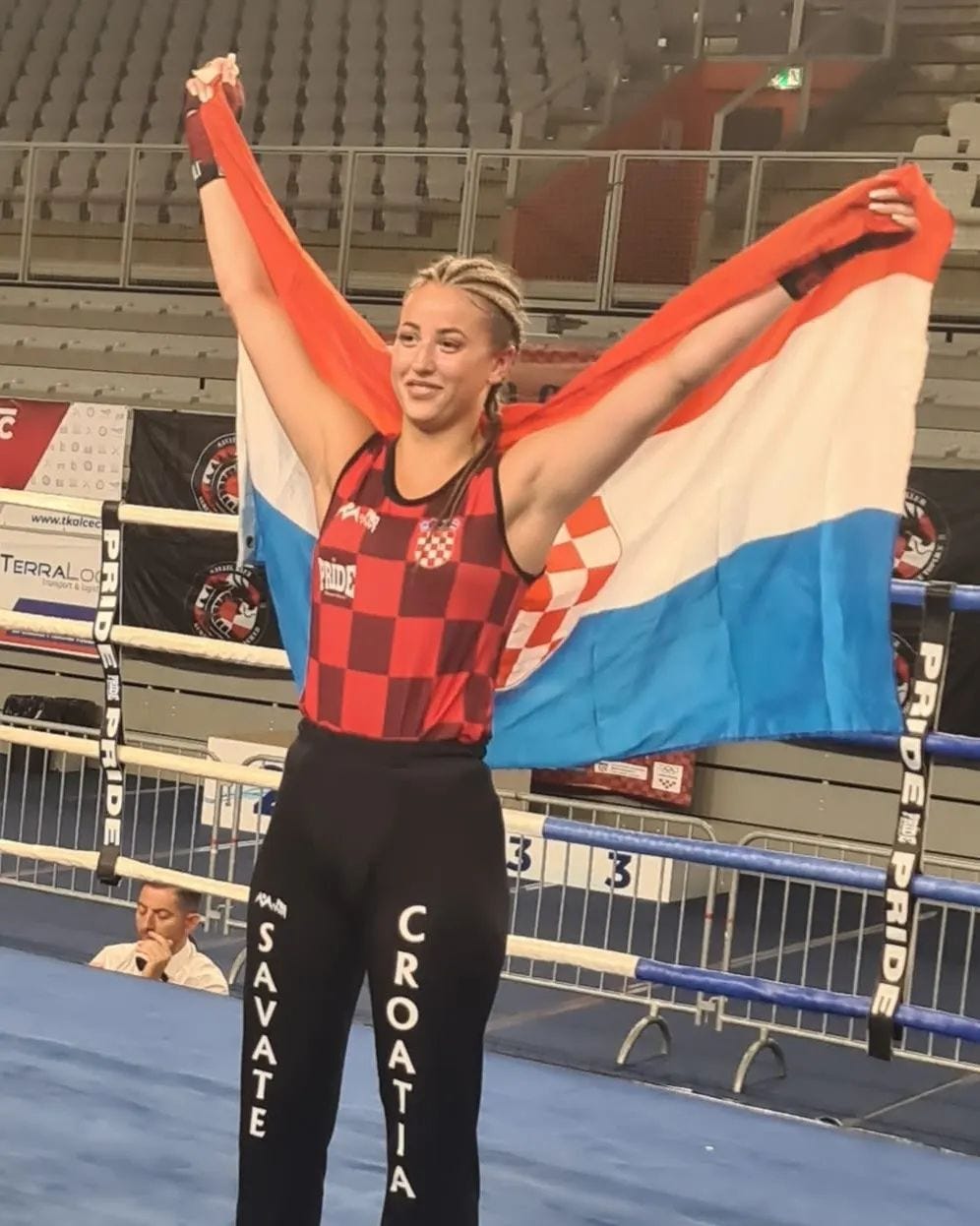
He sold his ad agency and spent even more time with his kids, helping them with their artistic pursuits and coaching them with sports. He also prioritized hanging out with his best friends from childhood, Dado, Garmaz, Dinko, Zvoni, and Joso, who characteristically brightened what could have been dark days.
And then Mario began turning his camera to nature instead of people, finding the beauty in the mundane.
Around 2021 Mario also delved back into music, which became his therapy, all the more since the Parkinson’s was making its presence known. “He was my personal DJ and we were always blaring music in the house,” Tina recalled. “The kids would come out and yell at us to turn it down — they were trying to study.”
Along the way, he connected with DF Tram, an internationally renowned DJ, who came to Croatia to meet him. Mario was struck by Dylan’s sincere kindness. Impressed by Mario’s collection of vinyl, DF Tram continually urged him to DJ. In his last two years, Mario started doing exactly that.
Never mind that Mario was pushing 60: his DJ parties, which he put on several times a year — sometimes at a café, sometimes at the local skate park — drew hundreds of people, young and old, including his kids and their friends.
Behind the decks, Mario — aka DJ Alo Momak — made the impossible happen; cliques dissolved, grudges were forgotten, and everybody danced until dawn.
“Those last few years, he was struggling,” recalled Tina. “DJ’ing was one of those things he used to pick himself up. He had a great group of young, vital people who loved him — and having fans was better than any prescription drug.”
In April 2023, Mario had two seizures and was hospitalized. While in the hospital, doctors discovered he had late-stage lung cancer, which had metastasized to his brain.
While in hospice, recovering from chemotherapy, Mario even then stayed creative, bringing in his friend Rašo and editing the documentary about heroin use in Split that he’d back-burnered when his mother got sick. They divided it into episodes for a series, planning to send it to Netflix.
The radiation therapy, when it began, was intensive and effective. Within days, his tumors had shrunk dramatically and, the outlook was good, better than his wildest expectations. Mario appeared invincible.
“Sorry, you can’t get rid of me so easily,” he wrote in a post for Facebook in which he apologized for losing touch with old friends and being secretive about his condition. But now, he added, he had many good years to look forward to.
Mario didn’t have time to post that final message.
Despite the optimistic prognosis, his daughter Lola knew something was wrong. A few weeks after they’d brought Mario back to his home overlooking the sea, Lola had a dream of Mario in his winged lilac Cadillac, telling her he had to leave.
Hours later, on the morning of July 26th, Mario was gone — off on the open highway to that great photo gallery in the sky.
Death is by nature absurd, but it only seems more so when it stops someone who is hyper-alive. His family is posting this by way of an explanation about the seemingly sudden death of Mario Lalich, the creator who never stopped creating and never stopped seeing the bizarre beauty of life.

Feel free to share this article — and please post your photos and tell your stories about Mario for his kids in the comment section below. Future posts will show more of his works.
— Melissa Rossi
Mario’s mold pictures link.
Archive of DJ Alo Momak’s dance parties.




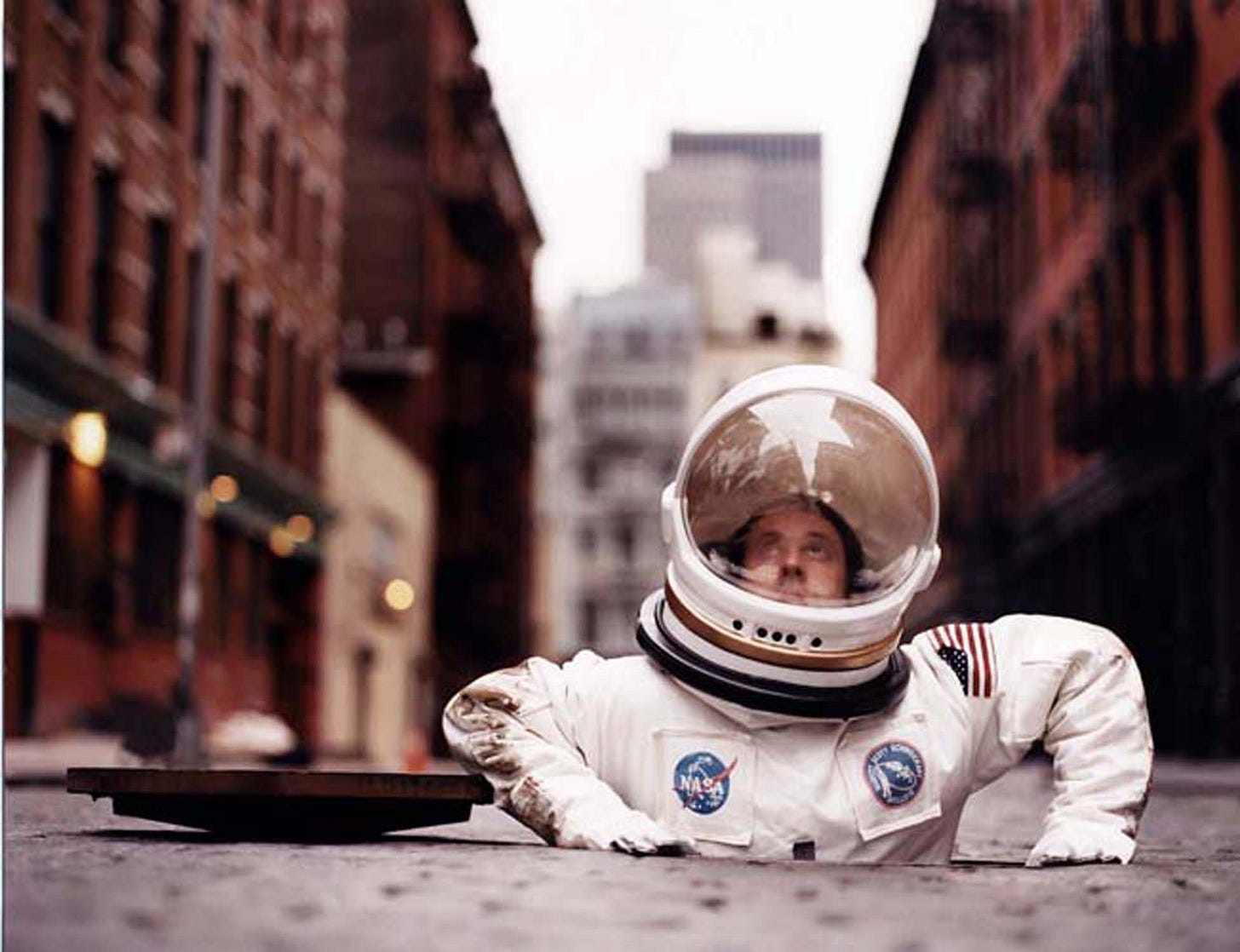
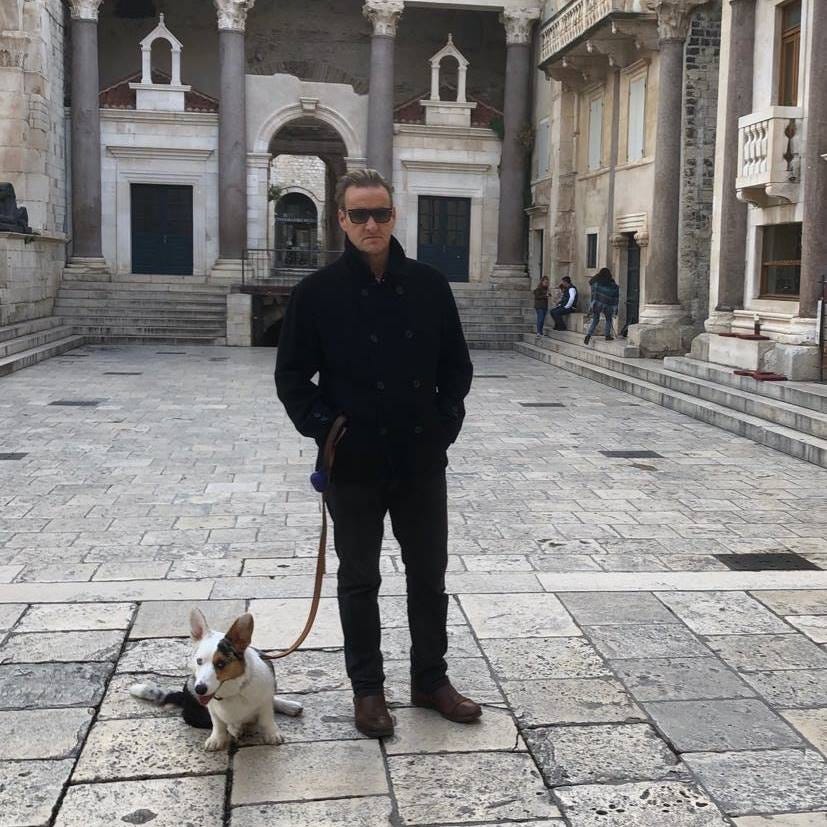

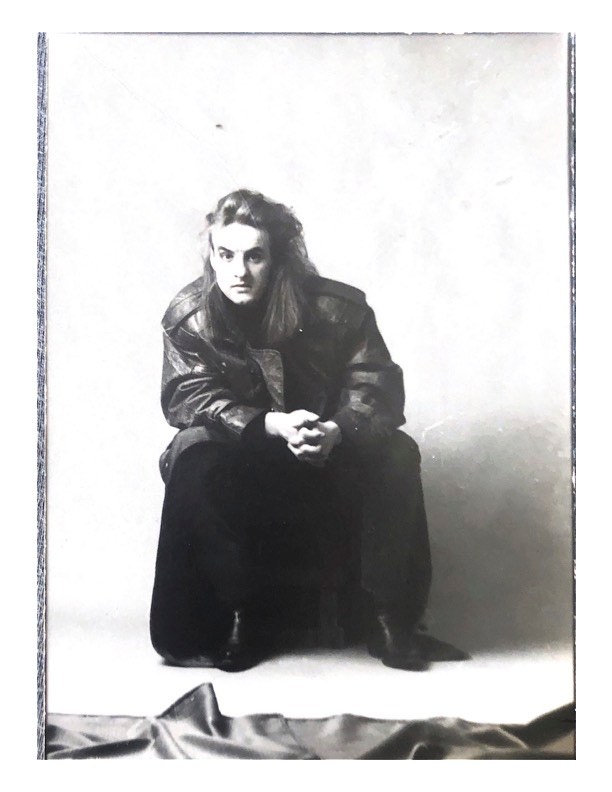

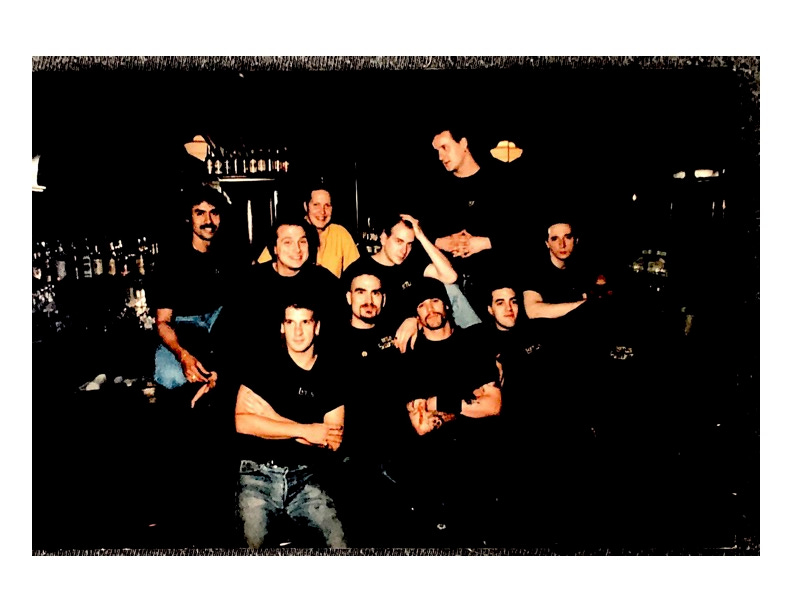
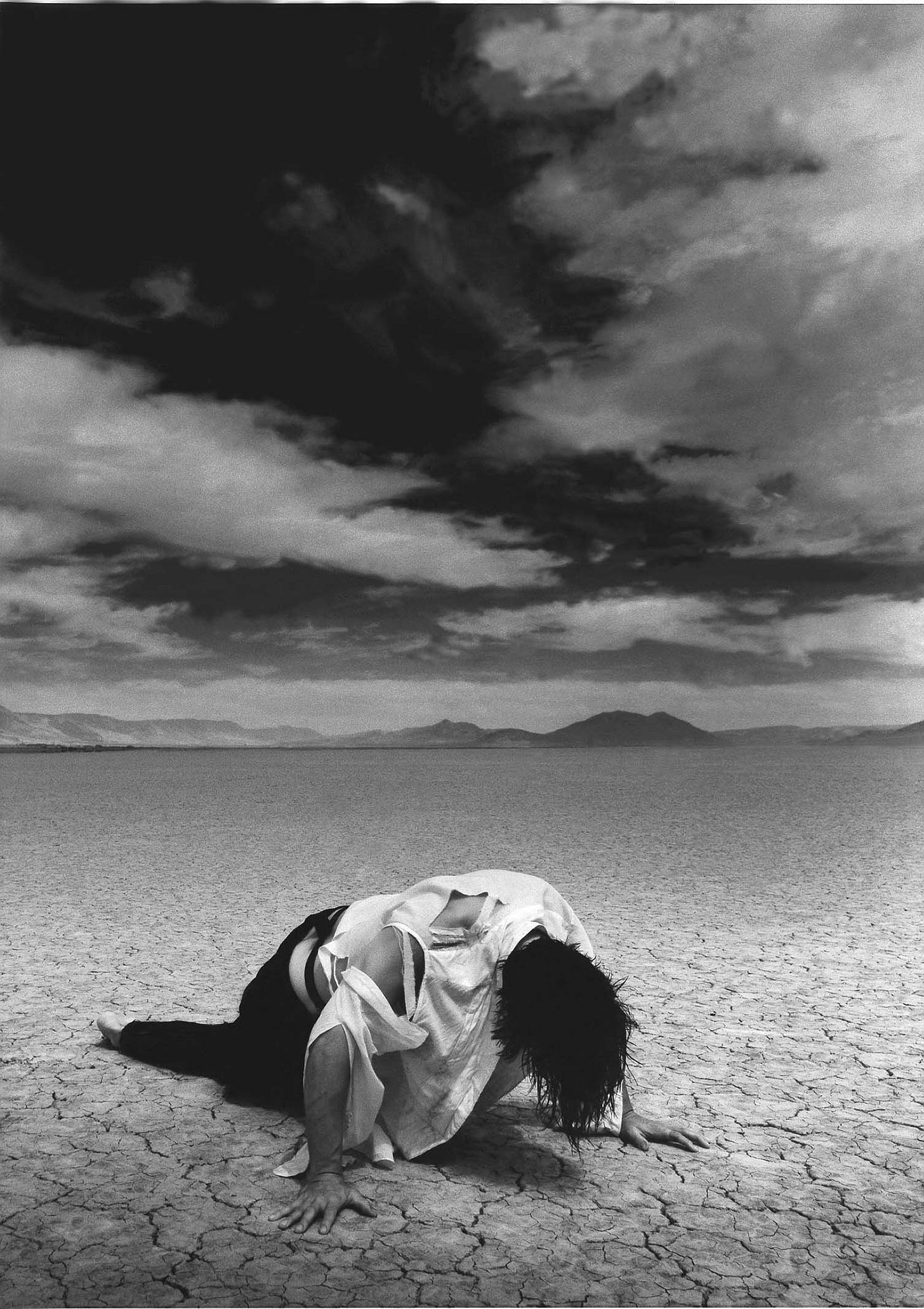

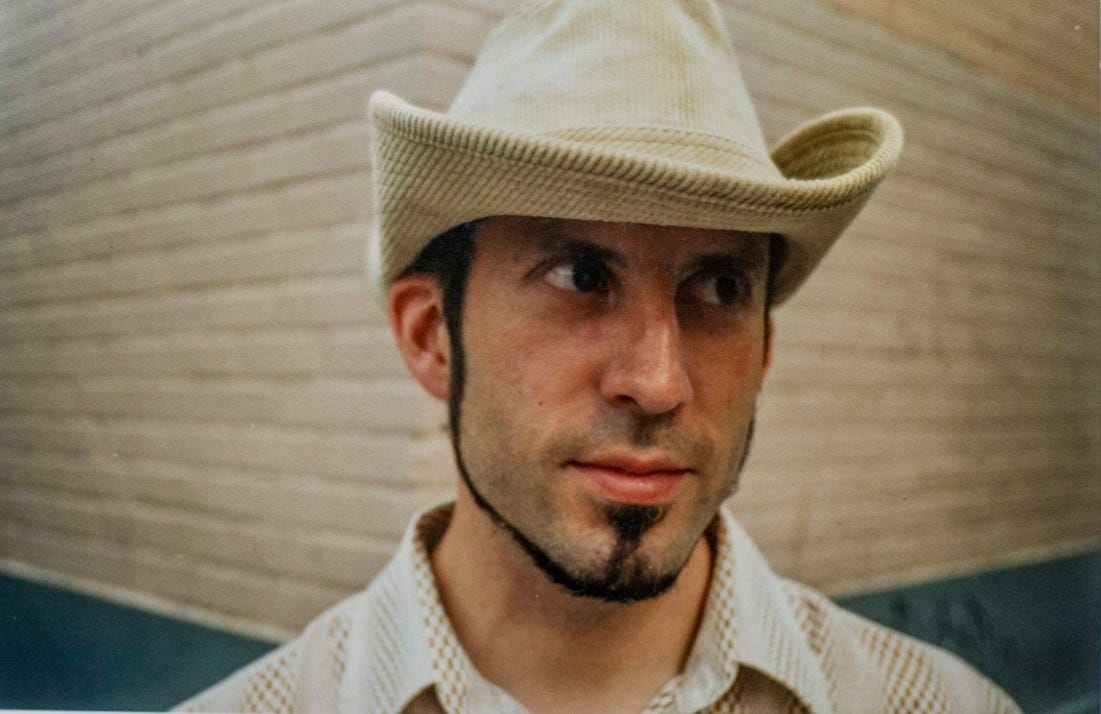

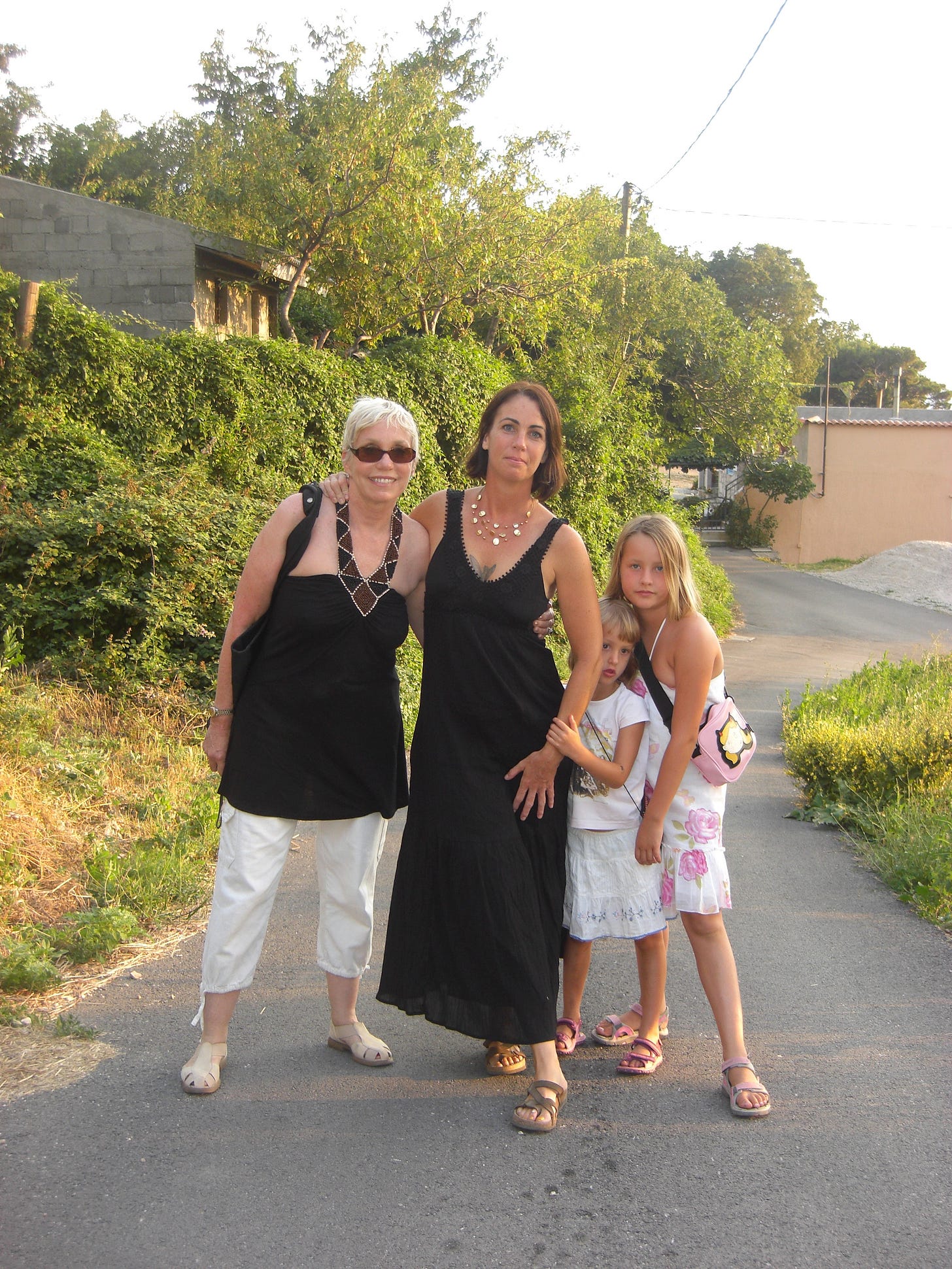

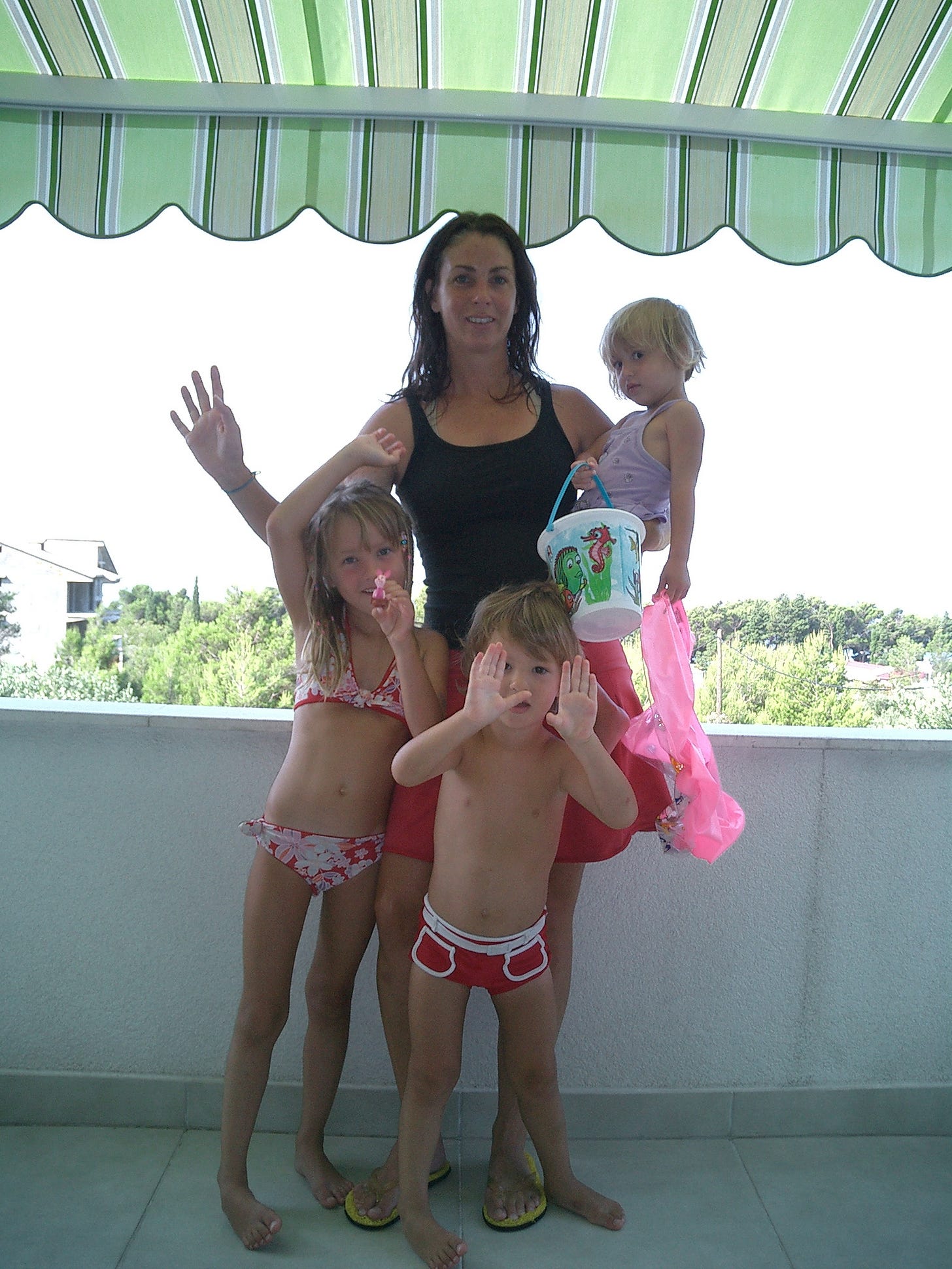
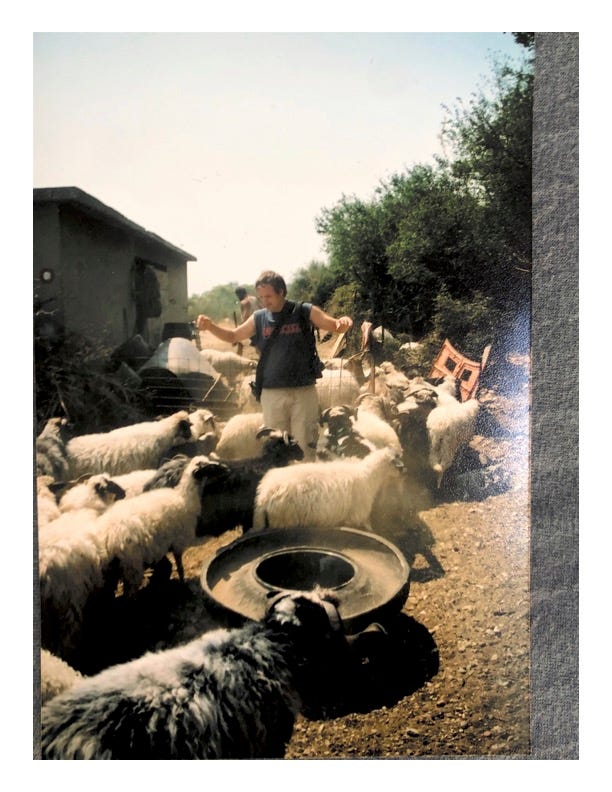
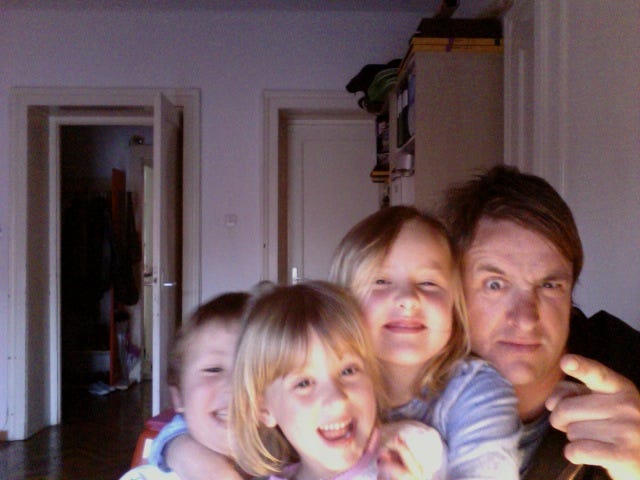
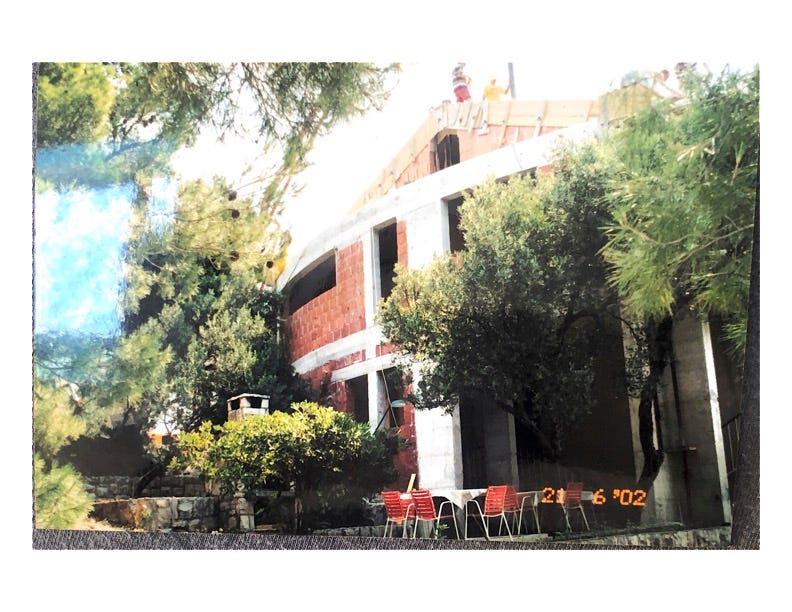
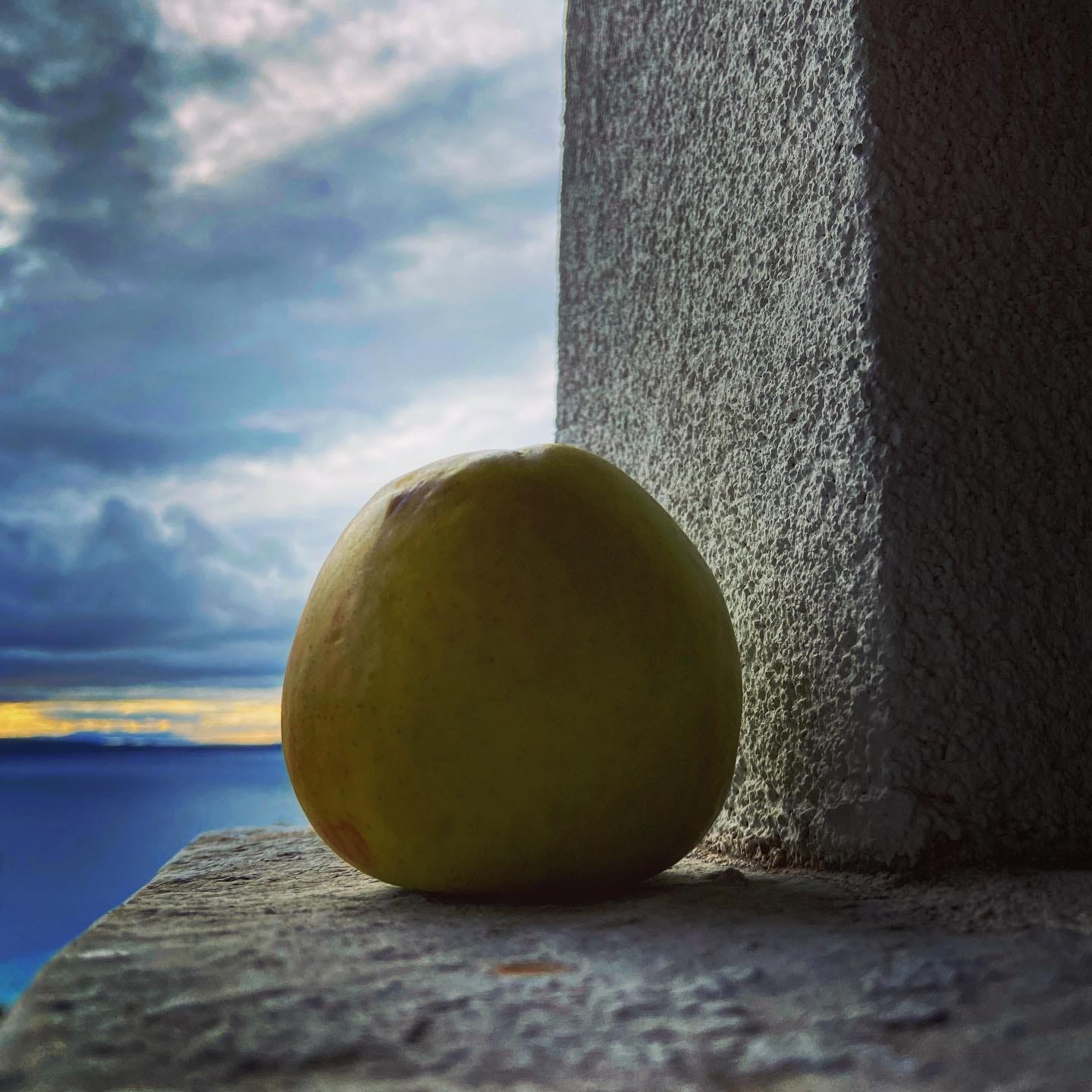
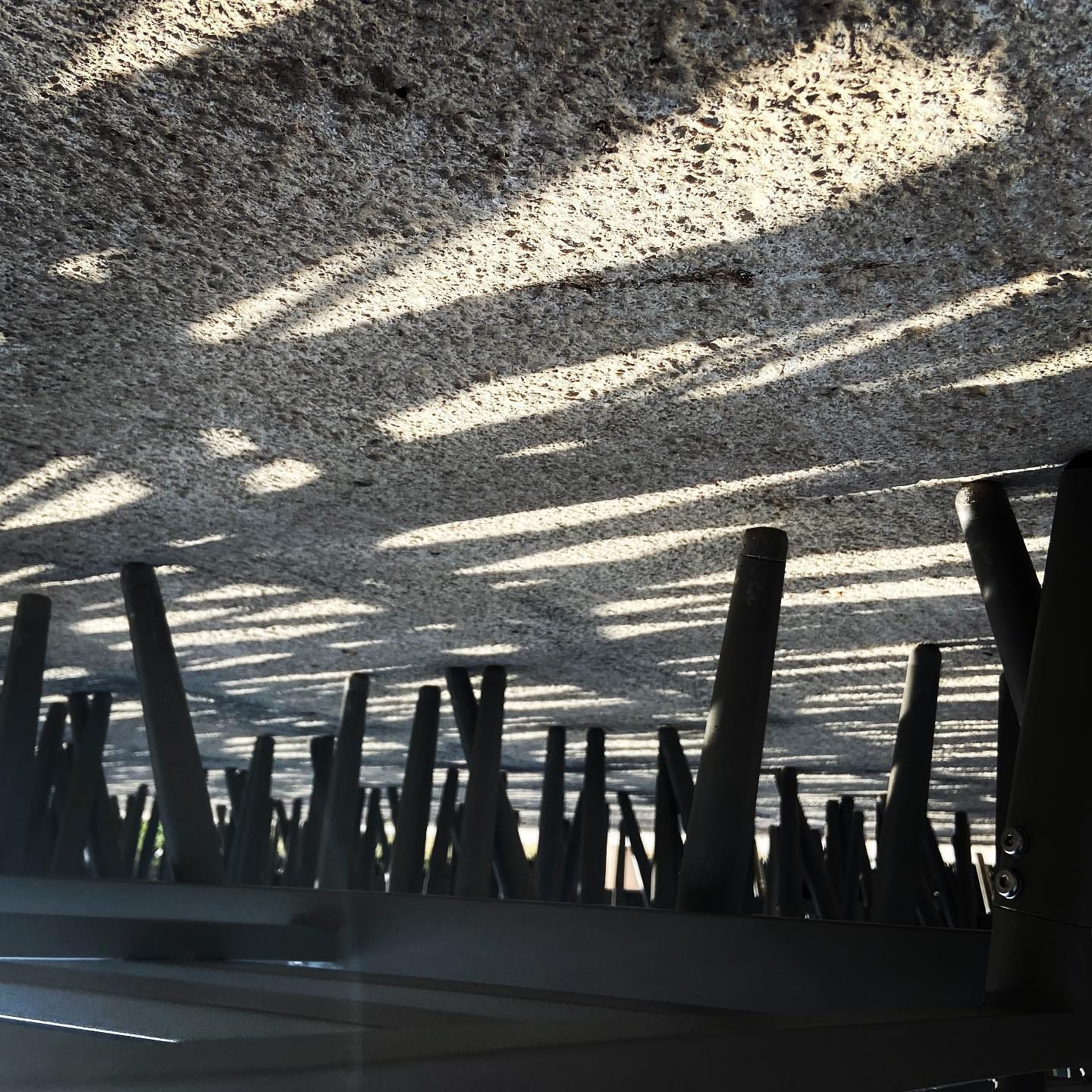



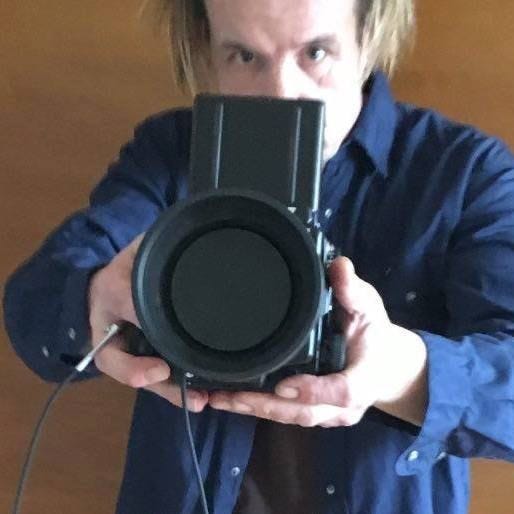

Mario & The Spaceman
By Karl Abramovic
I met Mario in the early 1990s and quickly bonded with him as if he were my long-lost brother. We both shared the same restless discomfort as aliens trapped in human society. The years we spent together felt like a Film Noir filled with adventure, chaos and comedy. The effect of those strange times, and our shared passion for surreal art still inspires the murals and oil paintings I create today, 30 years later.
I recall being jolted from sleep one night at 2 am. On the other end of the line Mario asked, “Karl, are you awake?” in his thickly accented English. Before I could reply, he cried out, “There’s a space man in my bedroom! A real one! I’m scared!”
This admission from anyone else would have seemed strange, but knowing Mario, I asked, “Did you take acid tonight? Remember, when you’re tripping, the things you see aren’t real, and things that aren’t real can’t hurt you.”
“No, no! I’m not tripping!” he shouted. “It’s real, it’s a real spaceman! I swear, it’s real!”
“What’s it doing?” I asked.
“Nothing. I mean, it emerged from some kind of space cloud. Now he’s just staring at me. I’m scared Karl…” Then the line went dead.
After all my attempts to call him back met busy tones, I quickly dressed and sprinted the five blocks between my apartment and his Portland house on Glisan Street.
Before rounding the last corner, the reflection of flashing red lights in a thrift store window caught my eye. Past a line of fire trucks, near a network of gushing fire hoses, I found Mario out on the sidewalk. Draped in a blanket, looking disheveled and chain smoking, he mumbled, “I guess my house is on fire.”
“Where’s the spaceman?” I asked.
“There, right there,” he replied, pointing at a helmet-headed fireman in a fire suit on the wet stairs below his smoldering home.
“He was a spaceman when I woke up, I swear he was,” Mario whispered.
A side note: As I sat in front of my laptop at 1am on Mario’s birthday a day ago, the atmosphere outside was entirely calm. Then, a few minutes after I started writing this story, a burst of light flashed above the distant Catalina Mountains. As I continued typing, the sky over Tucson erupted with brilliant lightning and booming thunder, followed by a monsoon-like rain. Once I wrote the last words about Mario and the spaceman, the storm passed and all was calm again.
I’m hearing of this so late! 💔
I have so many fond memories it’s hard to pick one. He was and is such a force of nature and an artistic inspiration to me. So committed to all things creative with unbridled passion and decadence. I could count on him to be an honest soundboard of aesthetic opinion.
When Tina and Mario were leaving Portland, they invited me to a farewell dinner at our beloved L’Auberge.
Mario presented me with an unusual canvas featuring one of his Cupid photos painted in thick encaustic. This mixed media technique was a new experiment and the beeswax was still tacky. I was admiring its gothic beauty when he suddenly snatched it away, deeming it unworthy and ran off to the men’s room with it!
Tina and I sipped our drinks and waited out the artist’s storm.
Mario returned wielding a giant, filthy, ‘70s, framed French poster of a drunk man wine tasting. This was now my gift.
He chased me around the restaurant blocking my access to retrieve Cupid but his mind was made up, it belonged in the toilet!
I went back to L’Auberge later in hopes to save my little Cupid but it was gone.
I feel so fortunate to have spent time with you both in Split and summer in Makarska. To see you living the beautiful life and Mario’s passions just as strong for art, football, Vespas, freediving and family.
Tina, your years of devotion and commitment to see so many of those projects through would never have been possible without you. You are so loved.
Mario, I see your Cupid angel watching over us.